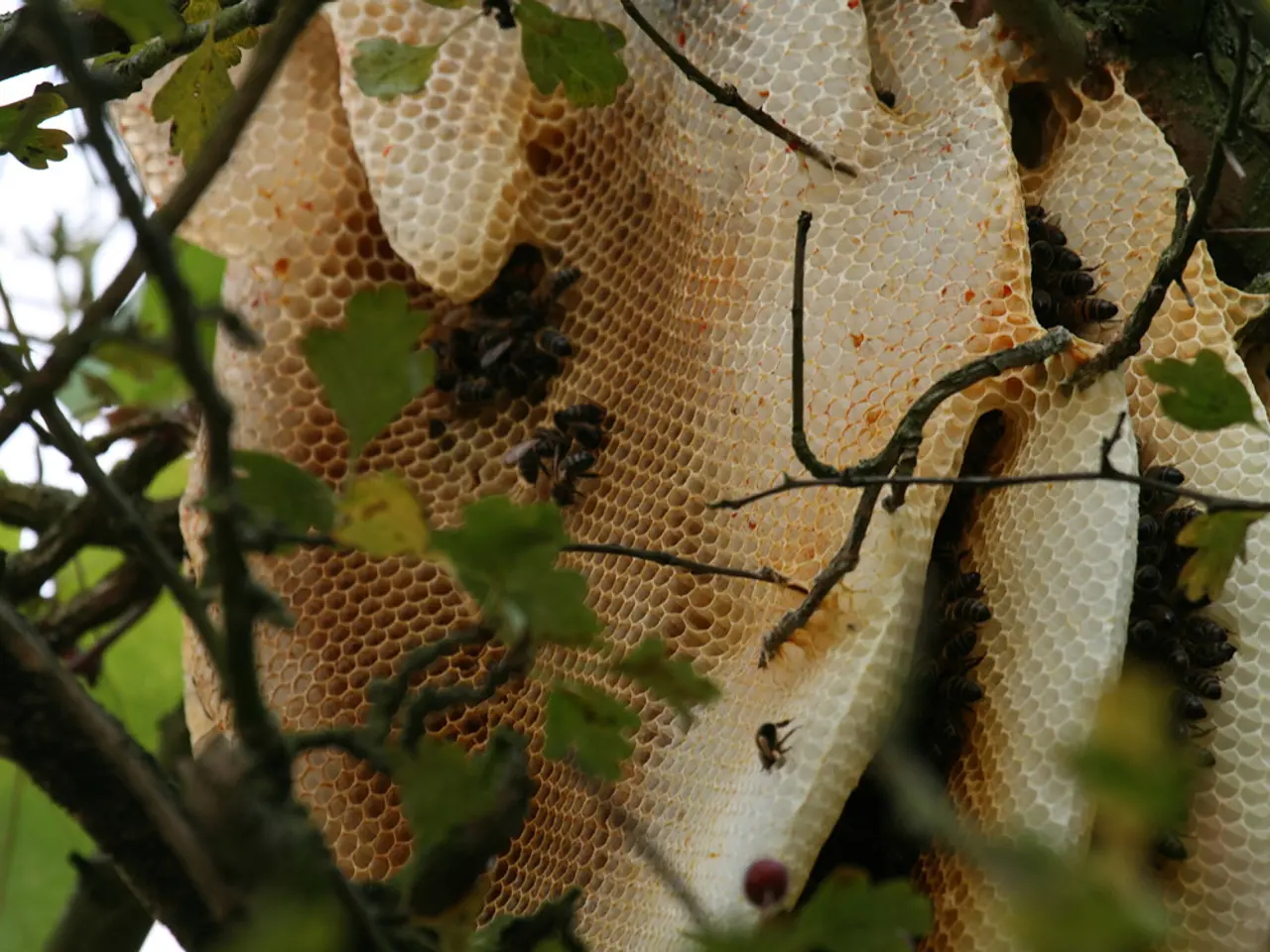Climate Alteration Endangers Honey Bees and Rare Bee Varieties
In recent years, the declining population of bees has become a pressing concern for both environmentalists and agricultural communities alike. This trend, if left unchecked, could have far-reaching consequences for the global food chain, leading to issues such as food insecurity, nutritional deficiencies, and further imbalances in regions sensitive to climate change.
One of the primary causes of this decline is Colony Collapse Disorder (CCD), a phenomenon that has led to the annual decrease in bee colonies worldwide. Factors contributing to CCD include agricultural land development, particularly deforestation and clear cutting.
Pesticides and fungicides, including neonicotinoids, are also known to harm bees and reduce their food sources. Neonicotinoids, a type of pesticide, have been identified as a significant threat to bee populations. In response, initiatives like the Harmony Weizen in Germany have implemented measures restricting the use of neonicotinoids like Acetamiprid and Imidacloprid by farmers, promoting non-chemical pest control methods and biological alternatives.
Governments are taking steps to address this issue. For instance, the French government started regulating neonicotinoid usage in the 1990s, and it was banned in Germany in 2008. National regulations could be implemented requiring a certain amount of bee colonies for every square kilometre of crops, and government subsidy programs could encourage investment in protecting pollination services.
Establishing apiaries at an equivalent rate to the land being used for crops could help bring the balance back into equilibrium. Urban spaces can also play a role in this effort. Green roofs, increased garden spaces, protected public parks, and dedicated apiculture farms can provide efficient urban habitats for bees.
Urban agriculture can mitigate food insecurity, reduce heat island effects, and provide ecological refuges for native pollinators, including honey bees, which account for about 90% of the workload in insect pollination. Insect pollinators, in turn, account for approximately 35% of total global food production.
However, climate change poses additional challenges. Continual warming would lead to higher small hive beetle populations, potentially crowding out bee colonies. The survival of the small hive beetle, a parasitic insect harmful to most bees, benefits from high soil temperature and humidity, factors caused by climate change.
In Australia, the carpenter bee is experiencing gradual displacement towards coastal and mountainous regions due to rising temperatures. These changes could have significant impacts on local ecosystems and food production.
The value of global pollination services is estimated at around USD$577 billion annually. Therefore, it is crucial that efforts are taken to protect and support bee populations. By implementing regulations, encouraging sustainable farming practices, and creating suitable habitats, we can work towards ensuring the survival of these vital pollinators and safeguard our global food supply.
Read also:
- Peptide YY (PYY): Exploring its Role in Appetite Suppression, Intestinal Health, and Cognitive Links
- Toddler Health: Rotavirus Signs, Origins, and Potential Complications
- Digestive issues and heart discomfort: Root causes and associated health conditions
- House Infernos: Deadly Hazards Surpassing the Flames








